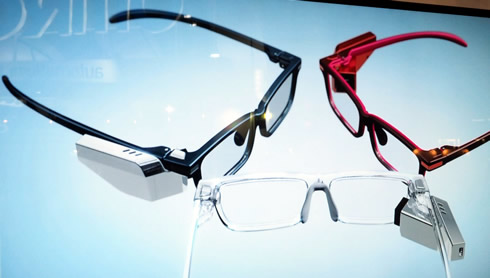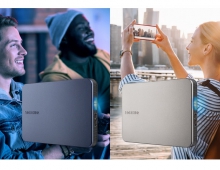
Toshiba Develops Lifelike Communication Android, Smart Glasses
Toshiba has developed a lifelike communication android that can move its arms and hands smoothly and use Japanese sign language.
The android is a prototype that the company will continue to develop towards achieving a service robot able to assist people in the fields of welfare and healthcare. It be showcased at CEATEC JAPAN 2014, which will be held from October 7 to 11.
The android has the appearance of a young woman, an impression accentuated by blinking eyes and a smile. At present, the android can mimic only simple movements, such as exchanging greetings and signing in Japanese, but Toshiba will integrate its wide-ranging technologies in areas including sensing, speech synthesis, speech recognition and robotic control to realize a more sophisticated social robot by 2020. The goal is to design a companion for the elderly and people with dementia, to offer telecounseling in natural speech, communicate through sign language and allow healthcare workers or family members to keep an eye on elderly people.

Toshiba developed the android in collaboration with aLab Inc., Osaka University, Shibaura Institute of Technology, and Shonan Institute of Technology. The Japanese company created an algorithm to coordinate the movement of 43 actuators in the android’s joints. Shibaura Institute of Technology and Shonan Institute of Technology contributed robot driving and sensor-based motion teaching technologies, and aLab Inc. and Osaka University provided the technologies required to create a body with a human-like resemblance and emulate human expressions.
Toshiba aims to put the android into practical use as a receptionist or as an exhibition attendant within next year.
Smart Glasses
Toshiba could not stay out of the smart glasses market and is showcasing a prototype pair of glasses at the Ceatec trade show in Japan this week.
Toshiba Glass features a lightweight projector clipped onto one of the arms near the lens. That projector displays an image that reflects off the inside of the lens to provide an augmented reality-type display.

Compared to the Google Glass, Toshiba's glasses don't have a prism over the lens to reflect the image into the eye. Instead, Toshiba's glasses lens itself comprises a series of vertical prisms.
Toshiba's prototype dows not offer wireless connectivity, at least for now. That's partly because the battery for the projector would make the glasses too heavy. In addition, it is relying on the processing power of a connected smartphone.
Toshiba plans to ship the product next year in Japan and North America.
In related news, Toshiba plans to discontinue production and sales of its e-book readers before the end of the year, The Yomiuri Shimbun reports.
The electronics giant has failed to expand use of the device against the popularity of smartphones and other tablet devices. Sony and Panasonic have also discontinued their production of e-book devices.





















